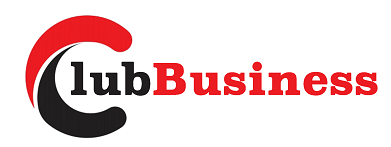Marketing research is essential for the development of new products, both during the implementation phase and during the marketing and sales phase. With it, a company can understand what customers want and develop a strategy that will create a successful product. Once you have a vision, you get to know the market and understand the needs of your customers, you need to formulate a specific product strategy accordingly. Before launching products to market, companies usually identify the needs and wants of their target audience.
To do this, they can use a sample of the target market population to better understand these needs and subsequently create a product and/or service that meets those needs. In this case, collecting opinions from the sample helps to identify the needs in general. In addition, company managers can use a sample of customers to assess the demand for new products or the success of marketing efforts. For example, if a company wants to primarily target 20-year-old women making more than $ 50,000 a year, it should collect as much data as possible from that particular market and use that data to influence its marketing decision.
Marketing research serves several purposes, including identifying a potential new market to enter or determining whether a new product launch will be successful for a company’s target audience. Marketing research enables companies to make informed decisions and make the most of their resources.
Selective product distribution is an intuitive way for brands to know what their consumers think of their products. Hiring a product sampling company is the best way to reach a large audience, increase sales, engage consumers, and encourage consumers to access products directly. Whether you’re looking to raise awareness or are already at the top of the consumer radar, a sampling company quickly turns your brand into a tangible product.
When consumers directly contact, taste, and experience your products without risk, it can make your Instagram dynamics come to life. Even if you haven’t turned the sampler into a paying customer, offering free samples is a great way to gather feedback from those who have tried a miniature version of your product. In short, giving away free samples will deliver your products directly to the target consumers. The third benefit is that by using sampling, you have every opportunity to create a market and create demand for products that customers have never seen or experienced.
As mentioned above, 24% of respondents stated that they are buying a product of their choice, not the product they intended to buy when they first entered the store. Product sampling has been proven to help consumers change from a planned product brand to a promoted product brand when providing samples. This allows companies to target targeted traffic to specific brands, allowing consumers to try new products.
With the help of digital technology, brands can focus on attracting consumers whose lifestyle matches the products they choose, thereby significantly increasing their potential purchases. Traditional product sampling allows consumers to familiarize themselves with a brand, while digital product sampling provides valuable consumer data that can be used in remarketing strategies. Product sampling can also help consumers better understand the company’s products and help the company achieve its goals.
Sampling products help consumers better understand the company’s products or services, thereby increasing the likelihood of purchase. Therefore, please keep in mind that sampling can not only quickly distribute the product to consumers, but it can also encourage consumers to shop on the day the product is sampled. After all, sampling allows consumers to try products without any promise, future or present.
If done well, product sampling can be an extremely effective strategy to increase sales, but only using traditional methods can reduce the potential impact on brands and consumers. Traditional product sampling methods, such as grocery store activation, events, pop-up windows, or direct mail, have traditionally been the benchmark for CPG brands, to deliver products to as many consumers as possible. Historically, brands have relied on samples of in-store merchandise to tell the story of their products. Smart marketers are increasingly using product sampling as a way to increase brand awareness, increase sales, and increase customer loyalty.
Known as the most popular direct sampling method, you can provide products to consumers in stores. Similar to your indirect sampling, this is a method by which you provide products to customers for testing at home. For example, let customers try the product and then try it at home.
Know how much product is needed per serving and you can be confident that your customers will be able to use your sample. The sample envelope design will tell your customers everything they need to know about your product.
The correct number of sample bags is the number that allows you to present your product to as many target consumer families as possible within your budget. You want to make sure that you ship enough of your product in each sample container for the buyer to get an effective impression of your product without shipping so much that it is wasted or costs you too much.
There is also an additional obstacle to influencing the consumer with a discount, as the consumer is less likely to interact with your activation without offering a sample product.
Product sampling is a great way to solve this problem, it allows any new business to get good reviews from their customer base. Many sampling techniques now require consumers to fill out questionnaires to help brands better understand their motivation for initially trying products, so that brands can get rid of obvious gift hunters. Many consumer products companies now offer free samples on their websites to encourage consumers to use the products regularly [1] and collect data to send mailing lists of customers who may be interested. Courtesy, Costco, Sams Club, food courts, and grocery stores give free samples to customers to persuade shoppers to buy products.
People try samples and we see an increase in reorder costs as about 40% of our customers add the product they have tried before as a sample. The purpose of the free sample is to introduce the consumer to a new product and is similar to the concept of a test drive in that the customer can try out the product before purchasing it. If she offers customers free samples of her moisturizer, they can see the positive results of using it before investing in a full-price product.
It draws attention to the product, provides first-hand insight into what customers think of it, which is great for improvement, and ultimately builds personal contact with the customer and thus lays the foundation for reliability. The success of a sampling program is not only about getting the product into the hands of consumers. A product sampling company can solve it all for you.

